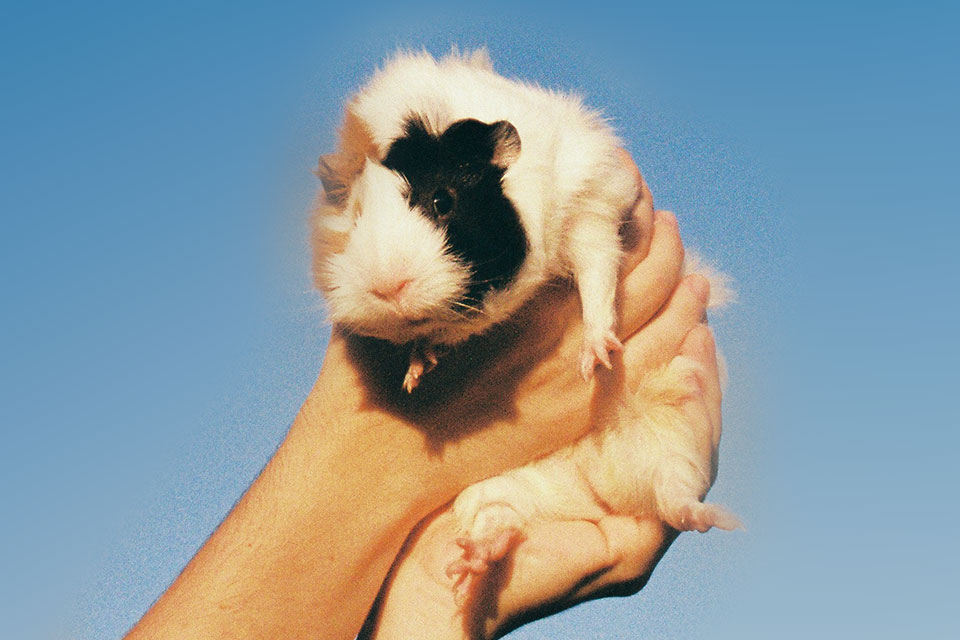
Guinea pigs are known as a fun, social creatures. They endear themselves to their humans and strangers alike. They can jump when happy and are quite expressive and chatty. It would make sense that a guinea pig owner would want to bring them everywhere. However, travel with a guinea pig isn’t as seamless as with a cat or dog. You will need to take some precautions and do some planning when traveling with any small pet. However, once you have taken the proper steps, traveling with a social creature like a guinea pig can be a blast.
Taking your guinea pig on an airplane can be tricky. Not every airline lets small animals like a cavy fly on their airline. The rules can also differ between airlines. Some treat small animals like guinea pigs as cargo and don’t permit them in the cabin. Others do allow small pets in their cabins if they are properly secured in a travel cage. There can be even more restrictions based on if you are taking an international flight or not. Many airlines will not allow pets in first-class or business class seating.
Frontier Airlines appears to be one of the best about allowing cats, dogs, and other small pets to fly on their airlines. Check their website for specific details and fees. They do permit guinea pigs in the cabin, as does United Airlines. American Airlines will only permit guinea pigs as cargo. The only complication with this is the cargo area of a plane is prone to wild swings in temperature and cabin pressure, making it not ideal for transporting a fragile pet like a guinea pig.
To ensure you don’t have to deal with the lack of uniformity in airline rules, save yourself the headache and travel by car with your guinea pig. This allows you more flexibility for taking meal breaks and allows you to regulate the temperature of your vehicle. Guinea pigs don’t sweat and lack the ability to control their own body temperatures. Being in a car will allow you to keep your car between 65-75 degrees F., which is the ideal temperature range for a cavy.
Make sure your guinea pig’s carrier is secured into place. Some cavys get upset or stressed when they travel. You don’t want the bumps felt during a car trip to make that worse. When traveling by car with your guinea pig, make sure to provide them with vegetables to snack on. When foods like carrots or lettuce are spritzed with water, there is an excellent chance you may not need to make a stop so your cavy can drink from their water bottle.
Bedding should always be included in the carriers. This gives them a place to hide or relax. For safety reasons, create makeshift bedding out of newspaper. Blankets or towels could block their air flow and make them too warm. If needed, have an ice pack on hand to put in their carrier. Don’t use a gel ice pack since a guinea pig can chew through it and get ill on the gel.
Position your guinea pig away from open windows, vents, direct sunlight, or anything else that can cause swift temperature changes or discomfort.

The one thing that is different between small pets like guinea pigs and cats & dogs is that guinea pigs aren’t subject to vaccinations. However, some may still want a certificate of wellness saying that your guinea pig is in good overall health. Before you take any trip, visit your vet and get this certification just in case. It’s also just a good practice to visit your vet before a trip, so you are assured your guinea pig is in its best physical condition. The stress of traveling can exacerbate underlying health conditions in your cavy. If you are traveling through the EU, guinea pigs are not subject to the pet passport that cats and dogs must have.
Guinea pigs are social creatures who enjoy human interaction. They don’t get as nervous meeting strangers as other pets do, making guinea pigs fun travel companions. However, a cavy is very fragile and can’t handle temperature shifts. They are also subject to different travel restrictions than cats and dogs are. With some proper pre-planning, you can create a great travel experience for your guinea pig.